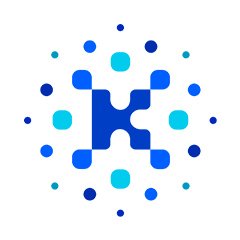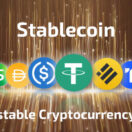Kin is a blockchain platform with a native cryptocurrency (KIN) that’s being developed by Kik, one of the world’s most popular chat apps in the world. The Kik app ranks No. 14 on Android in the communication category and No. 15 on iOS in the social networking category. It enjoys a high level of engagement with more than 15 million monthly active users who collectively send over a billion messages every day.
In addition to chat, Kik maintains one of the largest bot platforms with over 180,000 bots created by third-party developers. Kik’s large user base, demographics (57% of whom are in the 13-24 age bracket), and level of activity make it a unique platform where a cryptocurrency may be introduced and adopted by a large audience.
Monetization Without Compromising User Privacy
Kik has been looking for a way to monetize the platform without compromising user experience or privacy for years now. The platform’s biggest selling point is anonymity -uUsers can sign up without having to give away their phone number or verify their identity. The app doesn’t retain any account information or keep message logs on its servers.
Rather than displaying ads or selling user data, Kik has opted for a decentralized organization model. It will build fundamental value into Kin by integrating it into its platform. Kin will become Kik’s primary transaction currency and Kik will be the first service to join the Kin ecosystem. Users can earn Kin by providing value to other users of the community through content creation, curation, and commerce. They can spend it on services and products offered by merchants and developers.
Kin isn’t the first in-app currency Kik has experimented with. The company launched Kik Points in 2014 to see if its users would be interested in earning and spending a centralized digital currency. The experiment was a huge success. Millions of users participated, resulting in an average monthly transaction volume that was almost three times higher than the global transaction volume of Bitcoin. By the end of the experiment, over 2 million Kik Point transactions were taking place every day.
Through Kin, Kik is working to create an open and sustainable alternative ecosystem of digital services. Economic incentives at the core of this ecosystem will ensure that all participants will ultimately benefit from the platform.
How Kin Works
Kin will be used for everyday digital services such as chat, social media, and payments. KIN will be the unit for all economic transactions that take place within the Kin ecosystem, and it will serve as the basis of interoperability with other digital services. KIN tokens are fungible and transferable, and can be traded on major cryptocurrency exchanges.
The Kin Rewards Engine will be the platform’s economic incentive mechanism for further growing the Kin ecosystem. It will use economic incentives similar to Steemit’s posting rewards to encourage digital service providers to bring their services and applications into the ecosystem. A majority of the available supply of KIN (60%) will be allocated to the operation of the rewards engine.
The engine will periodically unlock and distribute a specific amount of KIN to be shared among digital service providers in the ecosystem. The reward a provider receives will be proportional to their contribution to the ecosystem, and the value of their contributions will be assessed by a well-defined process to ensure rewards are distributed in a transparent, auditable, and secure way.
Kin Foundation
Kik has established the Kin Foundation, an independent nonprofit organization that functions as the custodian of the Kin ecosystem. The foundation will oversee the distribution of the Kin supply and manage the Kin Rewards Engine. It will also provide support and tools for digital services to operate more easily within the ecosystem.
As a member of the foundation, Kik will showcase the ecosystem to its millions of users and promote digital services provided by Kin. This approach provides Kik with a path to transition from a competitive model to a cooperative one, where all participants benefit from their collective success. As part of the process, Kik will incrementally open the majority of its propriety codebase.
Membership on the foundation will eventually become open to other ecosystem partners. New partners will receive support with onboarding Kin and developing or augmenting digital services with integrated transaction economies. The foundation will also oversee the development of core components shared by all partners in the ecosystem, like compliance solutions, cryptocurrency wallets, and reputation and identity management.
Kin to Utilize Ethereum and Stellar Networks
The Kin Foundation announced in March 2018 that Kin will use Ethereum for liquidity (as an ERC20 token) and Stellar for transactions. The foundation decided to move Kin from Ethereum to Stellar because of the inefficiencies that plague the Ethereum network.
Ethereum’s throughput is currently 8.5 transactions per second, or approximately 740,000 daily transactions. Based on Kik’s experiment with Kik Points, Kin’s expected daily transaction volume will likely end up choking the Ethereum network in its current form.
Ethereum’s slow transaction confirmation times will significantly delay the responsiveness of Kin apps. Ethereum also requires fees to be paid for every transaction, which creates an adoption barrier for the average user. Moving transactions to Stellar solves both of these problems.
Kin is now split into two equal parts—one that runs on Ethereum and one that runs on Stellar. Using atomic swaps, Kin’s Stellar half can be locked up when its ERC20 half leaves the ecosystem, and vice versa. The new set of tokens deployed on Stellar will not impact any participant’s financial stake in the Kin ecosystem.
The Stellar protocol is specifically designed to handle non-native assets and conduct exchanges with other protocols. Stellar is fast and efficient, and is currently in the middle of adding the Lightning Network, which will move transactions to off-chain payment channels and allow blockchains to scale without stressing the network or increasing fees.
Kin Wallet
Kik is developing a wallet for KIN that features common interactions used with other cryptocurrency wallets, such as deposits, withdrawals, and transaction history. The wallet will be integrated directly into Kik user accounts. With Kik’s millions of active users, it might end up becoming the most used cryptocurrency wallet in the world.
The Kin wallet will reduce common onboarding frictions, like transaction fees, long strings of wallet addresses, and private keys, so that users with no prior experience with cryptocurrencies will be able to comfortably use KIN.
KIN Trading Volume, Pricing, and Market Cap
KIN was launched in an ICO that ended in September 2017 after raising $98 million USD. The total supply of KIN caps at 10 trillion tokens. 750 billion tokens are already in circulation. The supply is distributed as follows:
– 10% was offered in the ICO. The proceeds will be used to deploy the Kin Foundation and finance the project’s roadmap.
– 30% is set aside for Kik as the founding member of the Kin Foundation. In exchange, Kik will provide the resources and expertise needed to integrate Kin into its chat app. The tokens are subject to a long-term vesting schedule.
– 60% is held by the Kin Foundation and is set aside for the Kin Rewards Engine and operational costs.
KIN joined the market with a $74 million USD market cap. Its price shot up during the crypto hype of December–January 2018 to reach an all-time high of $0.001361 with a market cap of $1.028 billion USD. Its price has since fallen, but it has never gone back to pre-2018 levels.
Buying, Storing and Selling KIN
KIN can currently be acquired from Bancor Network, Fatbtc, HitBTC, Idex, EtherDelta, Mercatox, YoBit, COSS, CoinFalcon, and OTCBTC.
KIN is implemented on Ethereum as an ERC20 token, which means any Ethereum wallet that supports that standard can be used for storage. This includes MyEtherWallet, Jaxx, MetaMask, Parity, Mist, and Exodus. Hardware wallet options include Trezor and the Ledger Nano S.
Liquidity of KIN
Kik wants to pioneer a new economic model for digital services that empowers users instead of selling their attention and data to advertisers. It wants to foster an economy based around KIN and is pledging all of its resources to make it the primary transaction currency on its chat platform. It sounds like an attainable goal for a company the size of Kik, but that hasn’t translated into good market liquidity for KIN.
KIN currently has poor liquidity, but it will likely change once Kik fully integrates it into its platform. Kik has committed to complete integration by Q3 2018. The currency is currently open to a select number of Kik users and can be used to purchase sticker packs and digital art.






